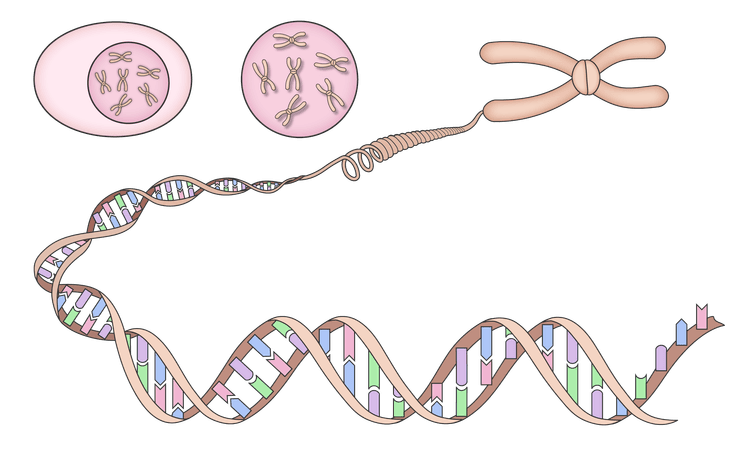Myths about teaching can hold you back
- Year 10
- Edexcel
- Higher
Darwin, Wallace and the theory of evolution by natural selection
I can describe the evidence and scientific discoveries that led to the development of the theory of evolution by natural selection
- Year 10
- Edexcel
- Higher
Darwin, Wallace and the theory of evolution by natural selection
I can describe the evidence and scientific discoveries that led to the development of the theory of evolution by natural selection
These resources will be removed by end of Summer Term 2025.
Switch to our new teaching resources now - designed by teachers and leading subject experts, and tested in classrooms.
These resources were created for remote use during the pandemic and are not designed for classroom teaching.
Lesson details
Key learning points
- Scientists develop theories to explain how the natural world works
- Darwin and Wallace collected evidence that helped them to develop the theory of evolution by natural selection
- The theory was not widely accepted at first, in part because it did not explain how heritable traits were passed on
- Many scientists contributed to wider acceptance of the theory of evolution by natural selection by investigating DNA
- These scientists discovered DNA and demonstrated its significance as the mechanism for inheritance of traits
Keywords
Theory - A general explanation that applies to many situations.
Evolution - The process in which the characteristics of species change over many generations, sometimes becoming new species.
Natural selection - Organisms that are better adapted to their environment are more likely to survive, reproduce and pass on their genes to their offspring.
Artificial selection - The process in which humans choose organisms with desirable traits and breed them in order to make offspring with these desirable traits. Also known as selective breeding.
DNA - The chemical molecule made of nucleotides, which contains the genetic code for making proteins in all living organisms.
Common misconception
Many students believe that Darwin was the only scientist involved in the development of the theory of evolution by natural selection.
This lesson directly addresses this misconception and includes examples of other scientists who were involved in the original and later development of the theory.
To help you plan your year 10 biology lesson on: Darwin, Wallace and the theory of evolution by natural selection, download all teaching resources for free and adapt to suit your pupils' needs...
To help you plan your year 10 biology lesson on: Darwin, Wallace and the theory of evolution by natural selection, download all teaching resources for free and adapt to suit your pupils' needs.
The starter quiz will activate and check your pupils' prior knowledge, with versions available both with and without answers in PDF format.
We use learning cycles to break down learning into key concepts or ideas linked to the learning outcome. Each learning cycle features explanations with checks for understanding and practice tasks with feedback. All of this is found in our slide decks, ready for you to download and edit. The practice tasks are also available as printable worksheets and some lessons have additional materials with extra material you might need for teaching the lesson.
The assessment exit quiz will test your pupils' understanding of the key learning points.
Our video is a tool for planning, showing how other teachers might teach the lesson, offering helpful tips, modelled explanations and inspiration for your own delivery in the classroom. Plus, you can set it as homework or revision for pupils and keep their learning on track by sharing an online pupil version of this lesson.
Explore more key stage 4 biology lessons from the Fossil evidence, selective breeding and explaining evolution unit, dive into the full secondary biology curriculum, or learn more about lesson planning.

Licence
Prior knowledge starter quiz
6 Questions
Q1.Who gives the best description of DNA?
Q2.Where is DNA found in plant, animal and fungi cells and how is it stored?

Q3. is the process in which the characteristics of species change over many generations, sometimes becoming new species.
Q4.What provides evidence for evolution?
Q5.True or false? Only animals can produce fossils.
Q6.Which features might a plant living on a rainforest floor have?
Assessment exit quiz
6 Questions
Q1.Which of the following statements are true about theories?
Q2.Match the word to its meaning.
Better adapted organisms are more likely to survive and reproduce.
The characteristics of species change over many generations.
Humans choose organisms with desirable traits and breed them together.
Q3.Starting with variation, put the steps of natural selection in the correct order.
Q4.Which scientist studied the howler monkey and also noticed how different species were separated by different geographical boundaries like rivers or mountain ranges?
Q5.Why was the theory of evolution by natural selection not accepted when it was first proposed?
Q6.Match the scientist to their contribution to the theory of evolution by natural selection.
proposed that traits are passed from parent to offspring.
extracted DNA from the nucleus.
produced the first X-ray image of DNA.
showed the 3D structure of DNA.


